Technologies
Why You Won’t Be Buying a Rollable Phone Anytime Soon
Shapeshifting concepts from Motorola and Samsung likely won’t turn into real products for quite some time.
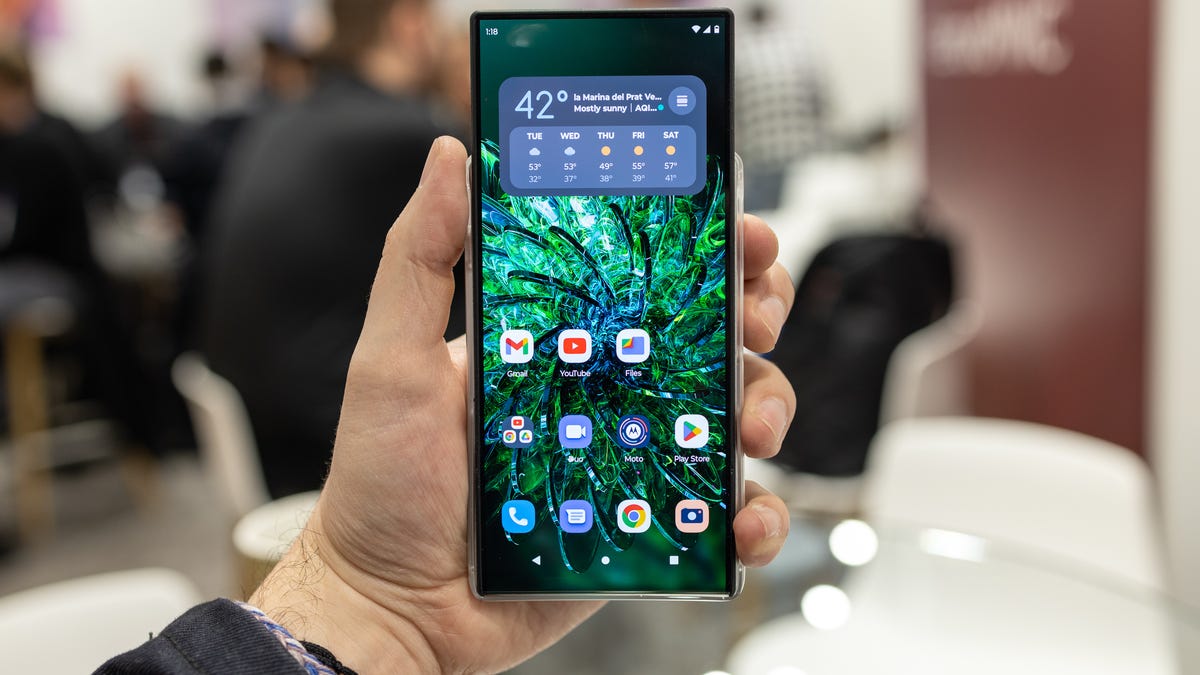
Imagine if your phone or tablet could change the size of its screen depending on what you’re doing? That’s the future Motorola and Samsung envision, as both companies showcased concept devices capable of extending or shrinking their displays with the press of a button.
Motorola flaunted its concept at Mobile World Congress this week, while Samsung exhibited a slew of shapeshifting prototypes at CES in January. Such concepts prove phone makers are thinking about the next evolution of personal devices beyond today’s static touchscreens. They’re even looking beyond foldable phones, which have only been widely available for a little more than three years.
But as eye-catching as these concepts are, it’ll likely be a long time before you’re carrying one around. High prices, engineering and durability challenges and a lack of compelling use cases will likely mean these concepts won’t turn into real products anytime soon. And if they do, there are still good reasons why you should wait before buying one.
Rollable phones are eye-catching


Motorola’s rollable phone in small (left) and large form (right).
Andrew Lanxon/CNETConceptual devices with expandable screens have surfaced before, but they’ve garnered attention again this week at Mobile World Congress thanks to Motorola and its parent company Lenovo.
Motorola showcased its prototype palm-sized phone that extends with the double press of a button. And even better, the screen automatically unfurls when using certain apps like YouTube, according to my colleague Andrew Lanxon, who got to see the device at the conference. The phone may also switch between small and large mode depending on what you’re doing within an app. For example, the phone may stay tiny when you’re scrolling through your inbox, but it could automatically expand as you compose an email, Lanxon writes.
When the device is in its compact form, the display wraps around the bottom of the device to provide a secondary screen on the back of the phone. I can’t think of many other reasons to use this extra screen other than as a viewfinder for taking selfies with the rear camera, as Lanxon did during his demo. Regardless, it’s intriguing to see how Motorola is thinking about putting that technology to use.
Take a look at the phone in action.
Andrew Lanxon/CNETEven though phones with rollable screens are in their infancy, they could present some notable advantages over today’s foldables, according to Ross Young, CEO and co-founder of Display Supply Chain Consultants. The crease may be smaller since it would be located at the edge of the device rather than in the center, he said via email. Rollable phones will also likely be thinner than current devices like the Galaxy Z Fold 4, which resembles two phones stacked on top of one another when folded.
But those benefits will probably result in additional engineering challenges. The motors and sliding mechanisms likely require more power consumption, says Young.
«Some brands told us there is a lot of work still to be done,» he said.
It’s not the first time Motorola has shown a concept like this; the phone maker also showcased the tech at Lenovo’s Tech World conference last year. But its arrival at MWC underscores Motorola’s ambitions in this area.
Motorola isn’t the only company interested in making phones with screens that can roll, slide and expand. Nearly two months ago, Samsung exhibited its own vision for what futuristic phones and tablets could look like. The star of the show was the Flex Hybrid concept, which looks like a notebook when closed but can switch between 10.5-inch and 12.4-inch screen sizes when opened.
Samsung showcased its display concepts at CES 2023.
David Katzmaier/CNETLG also made a splash with the rollable phone concept it teased at CES 2021, although the company shut down its mobile phone business shortly thereafter. Chinese tech giant Oppo has developed a rollable phone concept with a 6.7-inch screen that transforms into a 7.4-inch tablet-sized display.
At the same time, foldable phones — which are generally considered to be the precursor for future rollable devices — still only account for a sliver of the overall smartphone market. Foldable phones are estimated to have accounted for just 1.1% of smartphone shipments in 2022 and are expected to make up 2.8% in 2026, according to International Data Corporation. But that hasn’t stopped phone makers from looking ahead.
«They’ve got to keep innovating to differentiate,» said Brad Akyuz, executive director and mobile analyst at NPD Group. «That’s the only way they can just get ahead of the competition.»
But don’t count on buying one anytime soon
The word «concept» is crucial; these devices aren’t products. Instead, they’re proofs of concept meant to illustrate the direction these companies may take when developing future smartphones. That means we don’t know when rollable phones from Motorola, Samsung or other device makers will launch, if ever.
The foldable phone market could serve as a blueprint. Samsung demonstrated flexible display technology as far back as 2013, but it didn’t release its first phone that could fold in half until 2019.
Whether a rollable phone arrives in the near term or not, analysts believe it’ll take several years for the devices to become a regular fixture in the tech world. Akyuz pegs that at around three to four years, while Bill Menezes, a director for market researcher Gartner covering the telecoms industry, estimates three to six years.


Samsung’s Galaxy Z Fold 4 (left) alongside an iPhone (right)
James Martin/CNETThere are a variety of reasons why, all of which mirror the challenges that the foldable phone industry is going through. Prices need to be affordable, and phones must be durable enough to withstand everyday use without concern.
They should also offer compelling features that significantly improve the way you use your mobile device to make them worthwhile. Even though today’s foldables have different designs that make our phones more compact when closed, the overall experience is the same as that of using a standard phone. Samsung is trying to address this with a feature called Flex Mode, which divides compatible apps across the top and bottom portions of the display when folded halfway. But this feels more like an optimization than a brand new way to use your phone.
«A foldable phone really isn’t that much different than a flat phone concept,» said Menezes. «Once you open it, you’re still scrolling through to get to different applications, or different screens or tabs.»
Even if a company like Motorola or Samsung does release a rollable phone in the near future, you probably shouldn’t buy it. First-generation products can be expensive, damage-prone and not as polished as later iterations.
Take the Galaxy Fold from 2019, for example, which Samsung postponed launching after a small number of reviewers reported issues with the display. That phone was also priced at $1,980, while the much-improved Galaxy Z Fold 4, which just launched in August, starts at $1,800. Samsung’s smaller foldable, the Galaxy Z Flip, has also matured; the first version had a tiny screen that barely felt useful and lacked 5G.
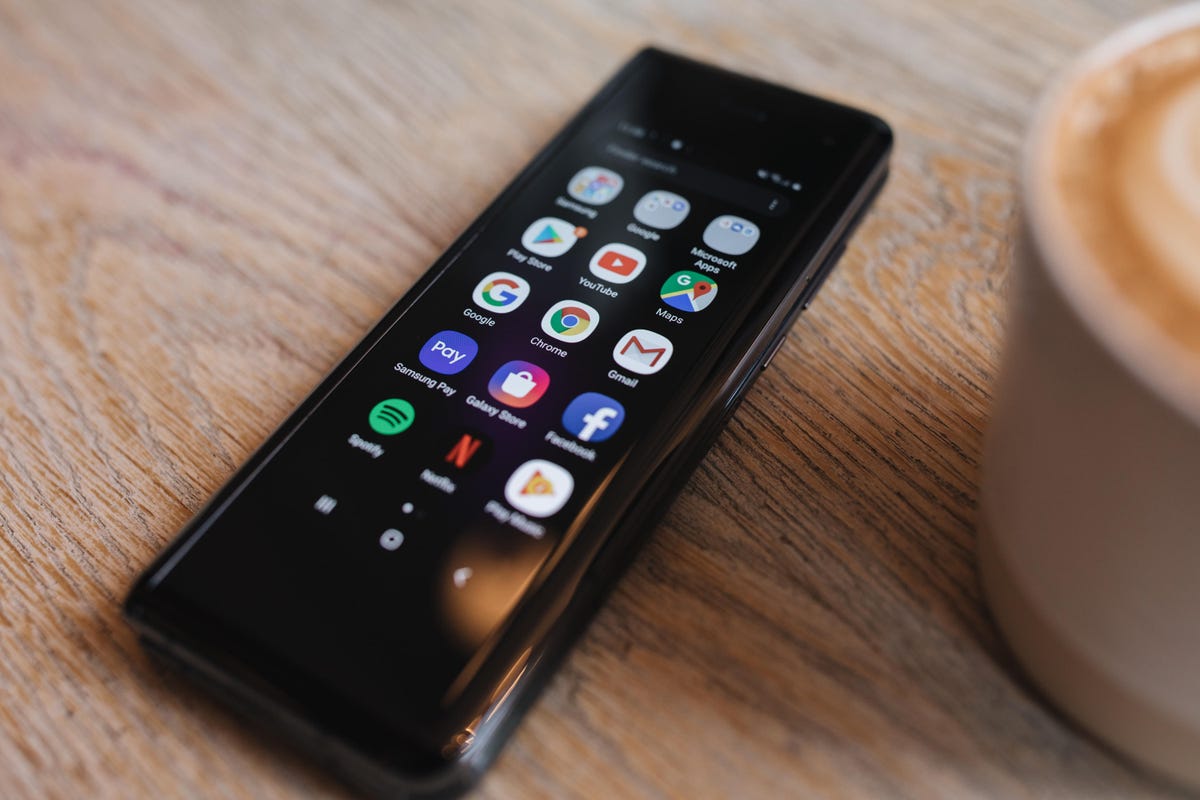

Samsung’s 2019 Galaxy Fold
Andrew Hoyle/CNETNow, more than three years after the Galaxy Fold’s launch, demand for foldable devices is starting to accelerate. Even though IDC’s report suggests foldables only account for a fraction of the smartphone market, shipments are estimated to have grown by 66.6% in 2022 compared to 2021. NPD Group’s Connected Intelligence Mobility Survey also suggests interest is growing. While 51% of survey respondents said they were not likely at all to buy a foldable phone in 2019, only 36% said the same in 2022, according to data from the survey shared with CNET.
«I think this is the future, I don’t think we can deny that,» Akyuz said. «But as we’ve seen with the foldable category, it’s just going to take some time to get there.»
Technologies
Can Chemicals Turn My Orange iPhone 17 Pink? Here’s What I Found Out
There are reports that some cosmic orange iPhone 17 Pro handsets are turning pink. I threw chemicals at my iPhone to see what would happen.
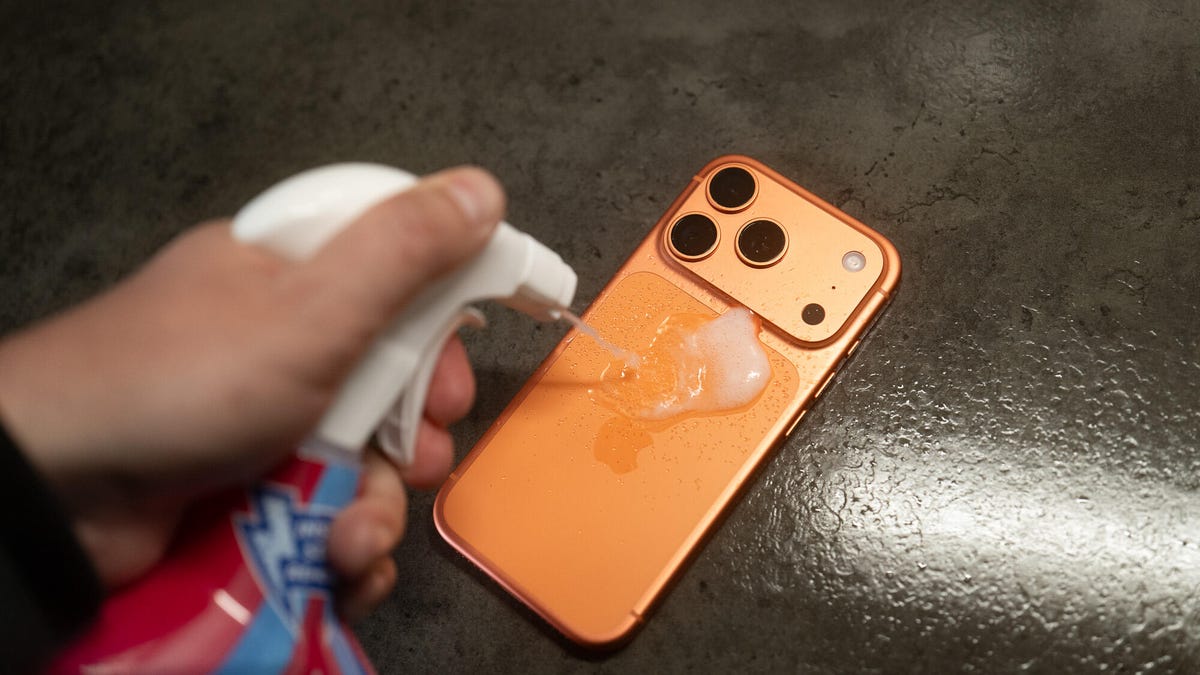
A recent Reddit thread suggests that it’s possible for a cosmic orange iPhone 17 Pro to turn vibrant pink. As PCMag’s Eric Zeman noted, it’s likely that the phone has been discolored by cleaning substances that affected the finish, turning it from vibrant orange to a wild hot pink. Sure, this might technically be a fault, but in all honesty I love pink phones and the idea of a hot pink iPhone 17 Pro filled me with joy. So I wanted to see if I could test the theory and see just what color-changing effects various household cleaners might have on my phone.
It’s important to note here that the iPhone 17 Pro I used was bought by CNET for the purposes of testing. Had I paid over $1,000 of my own money I wouldn’t be so reckless in smearing it with chemicals that could potentially irreparably harm it. And you shouldn’t either. If you need to clean your phone, do it safely. Disclaimer aside, let’s dive in.
The chemicals
I bought two chemicals to test this out. Zeman explains that it may be oxidation that caused the color to change and that hydrogen peroxide could do this. I couldn’t find this over the counter in the UK, so I instead bought an «oxy-active» stain remover spray that, among other things, contains «oxygen-based bleaching agents» which sounded ideal. Apple also clearly states «don’t use products containing bleach or hydrogen peroxide» on its support page so, naturally, I bought some thick bleach too.
Oxy application
I started by spraying the oxy cleaner on a microfiber cloth until it was noticeably wet from the liquid and then liberally applied this all over the rear of the iPhone. The Reddit user with the affected phone showed that it only affected the metal parts, not the glass back panel, so I made sure to focus my attention on the sides and camera bar.
With the phone well and truly doused in chemicals that have no business being anywhere near a phone, I left it to sit and think about what it had done for 30 minutes — after which time I wiped it dry and took a close inspection. Disappointingly, my phone was still factory orange, rather than «what the hell have you done to your phone» pink. Time to move on.
Bleach blast
I opened the bleach and trying hard not to think about my days as a middle school cleaner, applied a liberal blob of the stuff to a cloth and smeared it over the defenceless phone, concentrating again on the metal areas. I definitely should have worn protective gloves for all of this so please make sure you take better care of yourself than I do if you do anything with bleach.
Again, I gave it a 30-minute settling in period before cleaning it off and inspecting the results.
The phone remained as orange as ever, looking as box fresh as it was the day before when it was, indeed, box fresh. The orange color hadn’t changed and now almost 24 hours later there’s still no sign of discoloration of any kind.
Is the pink iPhone 17 real?
I can’t say with any certainty whether the Reddit user’s images of a pink iPhone 17 Pro are real or not. The cuddly human side of me wants to take them at their word, while the journalist in me is sceptical. What I can say with certainty is that putting your orange iPhone into close contact with household cleaning products isn’t going to win you a funky, ultra-rare pink hue that you could sell on eBay for a small fortune.
It’s possible that using pure peroxide could be the thing that does it, but to be honest, if you’re going out of your way to throw industrial-grade chemicals at your phone then you may as well just directly try and dye it. My goal here was to see how susceptible the orange model is to everyday household cleaners such as kitchen cleaner or bathroom bleach — the sort of things it might naturally come into contact with in routine use. And what I’ve found is that, no, it won’t ruin the nice orange color. But it’s probably still not good for your phone.
Technologies
My Teen Loves Her Apple AirPods Pro 2 and You Will Too With This $100 Off Deal for Black Friday
Apple’s AirPods Pro 2 have everything you could want from a pair of wireless earbuds, plus a steep discount.
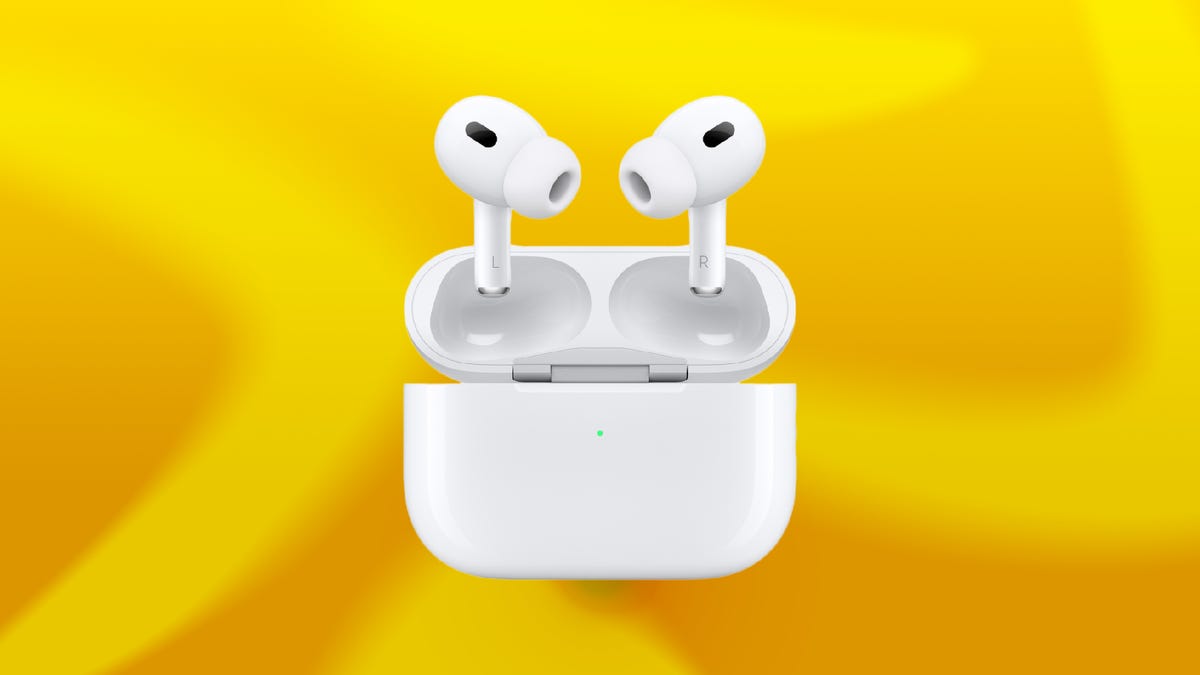
Black Friday deals: The Apple AirPods Pro 2 are some of the best personal audio gear on the market, even if they aren’t the latest model anymore. Sure, Apple’s AirPods Pro 3 are the newest earbuds in the lineup but the AirPods Pro 2 are still an excellent pick for most people.
They’re an even better buy this week during early Black Friday sales when you can get your hands on a pair of Apple AirPods Pro 2 at a discount. Right now, Walmart is shaving a massive $100 off the AirPods Pro 2, dropping the cost to $139. That’s one of the lowest prices we’ve seen — but we doubt this deal will stick around for long.
Don’t miss any of our unbiased tech content and lab-based reviews. Add CNET as a preferred Google source.
HEADPHONE DEALS OF THE WEEK
-
$248 (save $152)
-
$298 (save $131)
-
$170 (save $180)
-
$250 (save $200)
CNET’s key takeaways
- You can get these amazing earbuds for just $139 right now at Walmart.
- My teenager loves everything about them.
- The sound quality is exceptional.
- The noise cancellation can help give you some peace, even in a busy home.
My 13-year-old daughter loves her music and her privacy, and for years she has wanted a pair of AirPods. They’re not cheap so I’ve only been getting her more budget options, like the Amazon Echo Buds, as a result. These kept seemingly disappearing, though, so I finally ponied up for the AirPods Pro 2.
I picked them up during last year’s sales, and they were definitely well-received. She’s happy, she uses them every day, and she hasn’t lost them yet. The AirPods Pro 2 are currently on sale at Walmart for $139, a nice price for a high-quality pair like these, and one of the lowest we’ve seen.
What about the AirPods Pro 3?
The AirPods Pro 3 weren’t available at the time I bought the AirPods Pro 2, but they were rumored, and I didn’t wait to see what they offered. As CNET’s resident headphone expert, David Carnoy summarized in his AirPods Pro 3 and Pro 3 comparison, the newer model is «significantly improved in the four most important areas: fit, sound quality, noise cancellation and battery life.» They also have heart-rate monitoring, like the Beats Powerbeats Pro 2.
Hey, did you know? CNET Deals texts are free, easy and save you money.
While these are undoubtedly all important things, a lot of people aren’t going to notice the differences or make the most of the new features. With the AirPods Pro 3 being newer, they’re on a smaller sale and are currently available at Amazon for $220, which is $30 off the list price.
Why I didn’t get the AirPods 4 instead
Why did I choose AirPods Pro 2 instead of the AirPods 4 with ANC? First, as I mentioned in another article about a different pair of earbuds I bought, I think sealed, in-ear buds are better than open-design models like the AirPods 4. The seal creates another layer of noise isolation and contributes to superior sound quality, and if you want to pay attention to the world you can always engage ambient sound mode, which Apple calls transparency mode.
Also a factor was that, at the time, Carnoy considered the Pro 2 the best Apple noise-canceling wireless earbuds: «While we’re quite impressed with those new models — and with the AirPods 4 ANC in particular — the AirPods Pro 2 remain arguably the best Apple AirPods you can buy if you don’t mind having silicone ear tips jammed in your ears,» he said.
My daughter uses earplugs all the time to help her sleep, so she definitely qualifies as somebody who’s comfortable stuffing things in her ears. Like her fingers, when I start using words like «sigma,» «skibidi» and «relatable» to try to relate to her.
I asked Carnoy about the Pro 2s potentially not fitting in her kid-size ears and he reassured me that the range of eartips that come with the Pro 2s «now include XS, so they should fit.»
Do AirPods make a great gift?
It took me years to finally understand, but yes, for someone looking for wireless earbuds, AirPods — especially the Apple AirPods Pro 2 — make the perfect gift, regardless of whether you’re a teenage girl.
Join Our Daily Deals Text Group!
Get hand-picked deals from CNET shopping experts straight to your phone.
By signing up, you confirm you are 16+ and agree to receive recurring marketing messages at the phone number provided. Consent is not a condition of purchase. Reply STOP to unsubscribe. Msg & data rates may apply. View our Privacy Policy and Terms of Use.
Technologies
If You’re Flying for the Holidays, This Bluetooth Dongle Transforms In-Flight Movies, and It’s 35% Off for Black Friday
Watch airplane movies just like you would at home with this game-changing device.
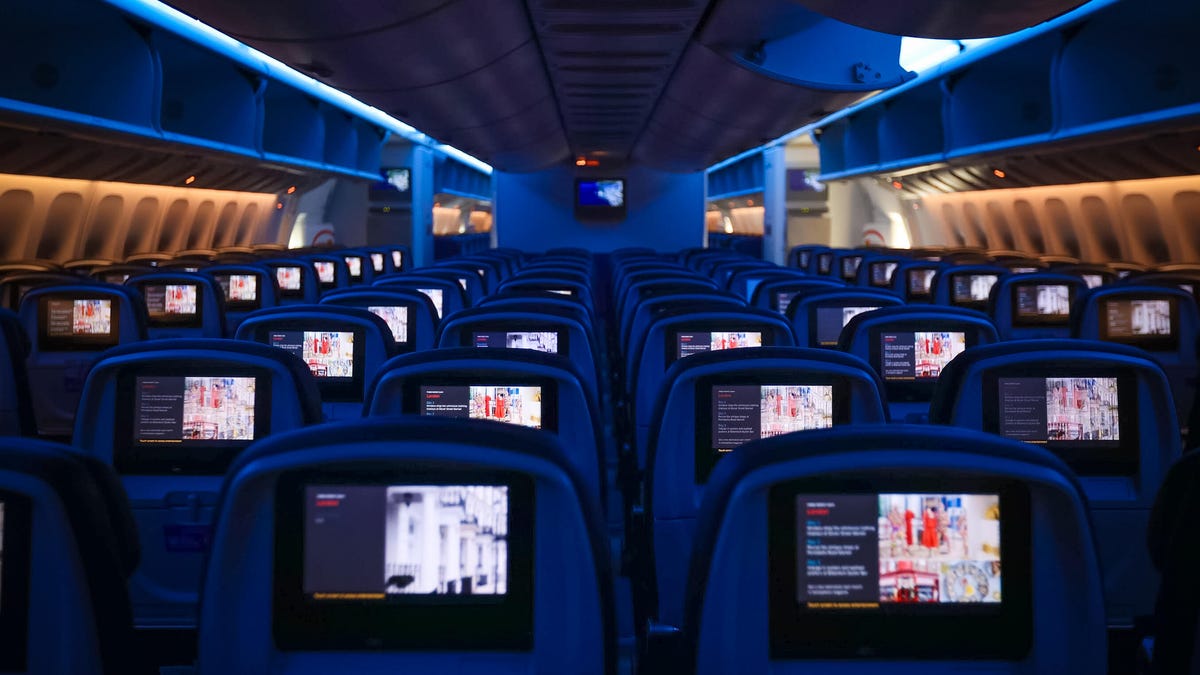
Air travel for the holidays can be stressful, especially when winter weather or flight delays force a change of plans, but one perk of flying still remains — watching new-release movies. However, in-flight entertainment on most airlines usually requires a wired set of earbuds. (And the ones the airline hands out are so bad they may as well not even be connected.)
I’d far prefer to use my wireless, noise-canceling AirPods Pro, but they connect only via Bluetooth. There’s a simple tech solution that makes viewing movies on the plane feel more like watching them on your couch.
The AirFly is a simple Bluetooth dongle that allows me to connect my wireless earbuds directly to the airplane’s entertainment system, eliminating the need for adapters or wired workarounds.
It’s become a must-pack item in my travel bag. Since I started using it, I’ve stopped dreading in-flight audio and finally get to enjoy movies on the plane. If you fly often, this little gadget could completely change how you travel. And the base level AirFly SE is 35% off for Black Friday at Amazon.
The AirFly Pro lets me enjoy in-flight entertainment
The AirFly Pro from Twelve South is a minimally designed dongle that allows me to connect to the 3.5mm headphone jack in my airplane seat, enabling me to listen to in-flight entertainment on my noise-canceling earbuds.
All I have to do is pair the AirFly with the Bluetooth headphones I’m using, such as my AirPods Pro, plug the AirFly into the display in front of me, and I’m all set. I don’t even need to use my phone to connect the two devices.
There are several versions of the AirFly: the AirFly SE, which is currently on sale for $26 on Amazon and connects to just one set of headphones, the AirFly Pro at $55, the Pro V2 at $60 and the Pro 2 Deluxe at $70, which comes with an international headphone adapter and a suede travel case.
Hey, did you know? CNET Deals texts are free, easy and save you money.
I use the AirFly Pro, which has been a game-changer for me on flights. I’ve never had to worry about battery life since the AirFly Pro lasts for over 25 hours and can be fully charged in just three hours. I can also pair two separate pairs of headphones to a single AirFly Pro, in case I’m with someone else on a flight and want to watch the same movie or show.
And if that’s not enough, the AirFly Pro also doubles as an audio transmitter, allowing me to turn any speaker with a headphone jack, such as my old car stereo, into a Bluetooth speaker.
The AirFly Pro makes a great gift for any traveler
The AirFly Pro is the perfect present to give to someone who’s planning to travel this year. Besides my Anker MagSafe battery pack, the AirFly Pro has become my most treasured travel accessory when I fly, which is why I consider it one of those can’t-go-wrong gifts.
For more travel gear, here are our favorite tech essentials to travel with and our favorite travel pillows.
Join Our Daily Deals Text Group!
Get hand-picked deals from CNET shopping experts straight to your phone.
By signing up, you confirm you are 16+ and agree to receive recurring marketing messages at the phone number provided. Consent is not a condition of purchase. Reply STOP to unsubscribe. Msg & data rates may apply. View our Privacy Policy and Terms of Use.
-

 Technologies3 года ago
Technologies3 года agoTech Companies Need to Be Held Accountable for Security, Experts Say
-

 Technologies3 года ago
Technologies3 года agoBest Handheld Game Console in 2023
-

 Technologies3 года ago
Technologies3 года agoTighten Up Your VR Game With the Best Head Straps for Quest 2
-

 Technologies4 года ago
Technologies4 года agoBlack Friday 2021: The best deals on TVs, headphones, kitchenware, and more
-

 Technologies4 года ago
Technologies4 года agoVerum, Wickr and Threema: next generation secured messengers
-

 Technologies4 года ago
Technologies4 года agoGoogle to require vaccinations as Silicon Valley rethinks return-to-office policies
-

 Technologies4 года ago
Technologies4 года agoOlivia Harlan Dekker for Verum Messenger
-

 Technologies4 года ago
Technologies4 года agoiPhone 13 event: How to watch Apple’s big announcement tomorrow
